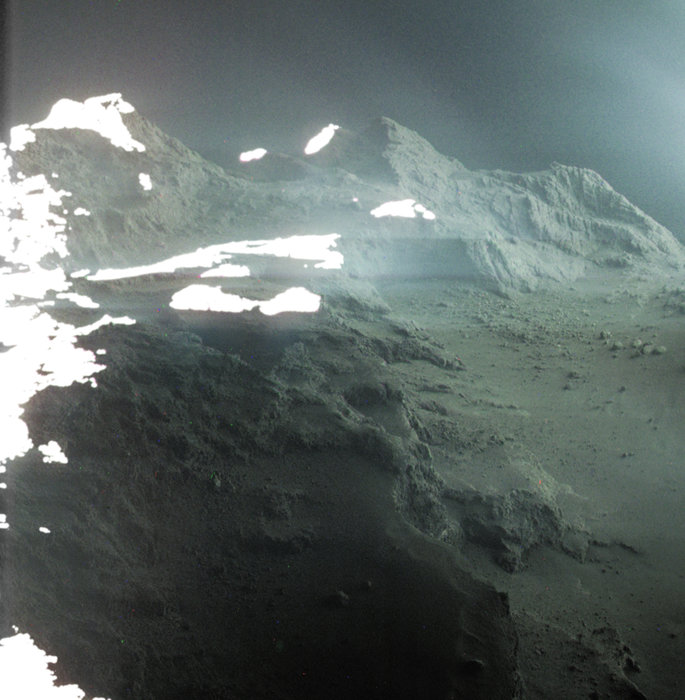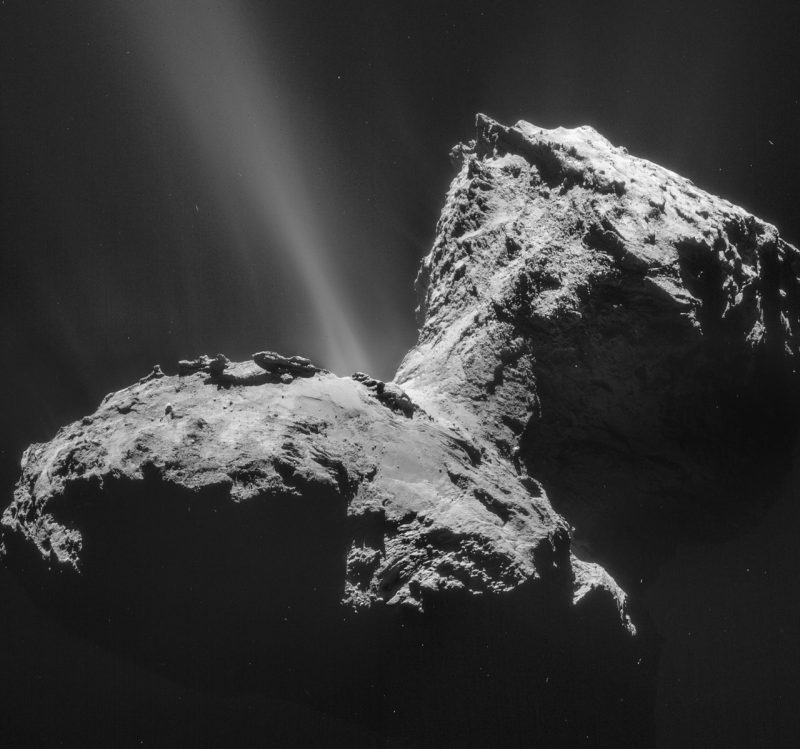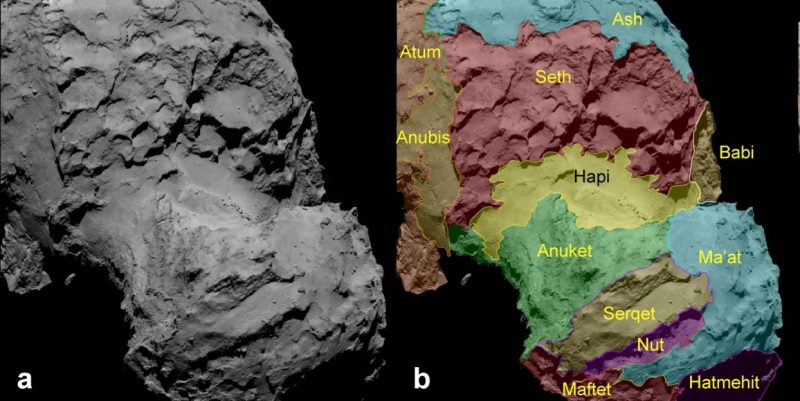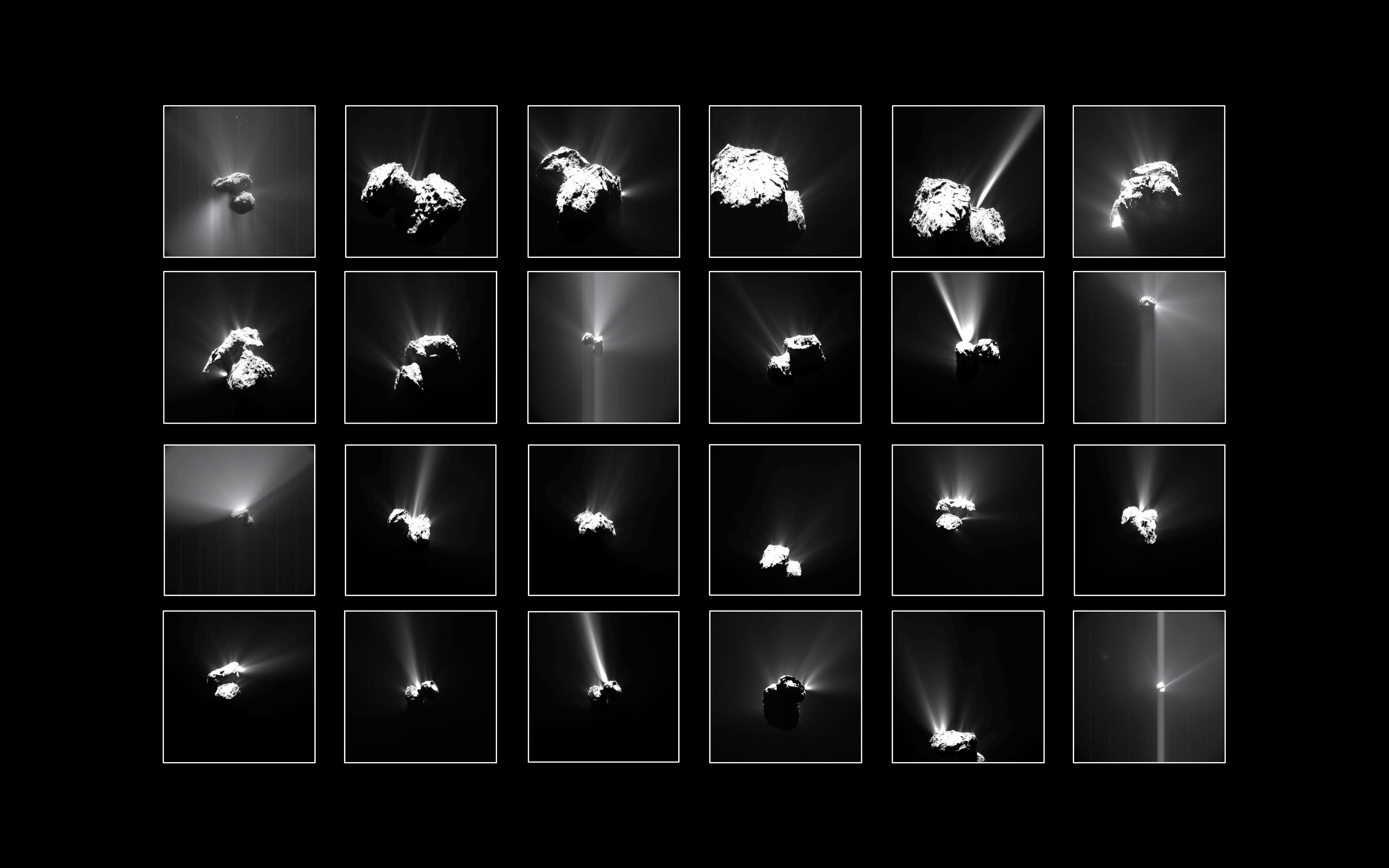
The European Space Agency (ESA) has been celebrating its Rosetta spacecraft, which was the first (and still only) craft to give us extremely close-up images of a comet. Rosetta ended its mission to comet 67P/Churyumov-Gerasimenko on September 30, 2016, with a controlled impact on the comet’s surface. Prior to that, it had monitored cometary evolution – in a way never seen before – for about a year before and after 67P came closest to the sun in August 2015. On October 1, 2018, ESA released this image of the comet. Haunting, isn’t it? It shows a portion of the comet as viewed by Rosetta only 1 1/2 months after Rosetta began orbiting 67P in September 2014. At the time of the image above, the spacecraft was just over 16 miles (26.2 km) from the comet’s surface. Amateur astronomer Jacint Roger Perez, from Spain, selected and processed this view by combining three images taken in different wavelengths by the OSIRIS narrow-angle camera on Rosetta. ESA said in a statement:
Seen in the center and left of the frame is Seth, one of the geological regions on the larger of the two comet lobes, which declines towards the smoother Hapi region on the comet’s ‘neck’ that connects the two lobes. The landscape in the background reveals hints of the Babi and Aker regions [see map below for the geologic regions on the comet, in context].
The sharp profile in the lower part of the image shows the Aswan cliff, a 134-meter-high [439-foot-high] scarp separating the Seth and Hapi regions. Observations performed by Rosetta not long before the comet’s perihelion, which took place on August 13, 2015, revealed that a chunk of this cliff had collapsed – a consequence of increased activity as the comet drew closer to the sun along its orbit.


By the way, this isn’t the first time that Jacint Roger Perez has done an amazing job processing a Rosetta spacecraft image. He also stitched together the animation below, which shows dust and ice particles near the comet’s surface:
Amazing time-lapse of images from the #Rosetta probe flying 13km above Comet 67P. A mix of stars, dust and ice particles, space debris. Stitched together/credit: Jacint Roger Perez pic.twitter.com/z1GDICfoNN
— Project Adrift (@ProjectAdrift) April 28, 2018
Who knew we’d ever see such a thing?
Generally speaking, thanks to both professional and citizen scientists, the Rosetta mission to comet 67P/Churyumov-Gerasimenko has been one of the most mind-expanding we’ve had so far. ESA launched the Rosetta spacecraft in 2004. The craft took 10 Earth-years to reach the comet, ultimately making six orbits around the sun. Its journey included three Earth flybys, a Mars flyby, and two asteroid encounters. The craft endured 31 months in deep-space hibernation on the most distant leg of its journey, before waking up in January 2014 and finally arriving at the comet in August 2014. And that’s when the fun really began.
ESA is proud of the mission and invites you to:
Explore the full [Rosetta] mission image archive yourself and let us know what hidden treasures you find via @esascience.

Bottom line: Amateur astronomer Jacint Roger Perez of Spain processed this Rosetta spacecraft view of comet 67P/Churyumov-Gerasimenko.











